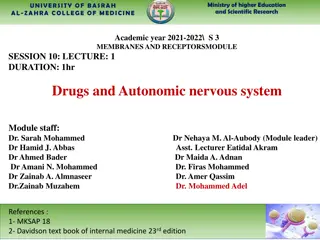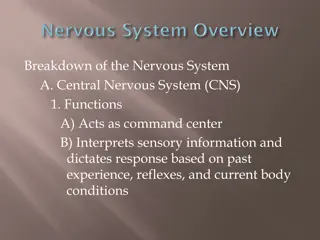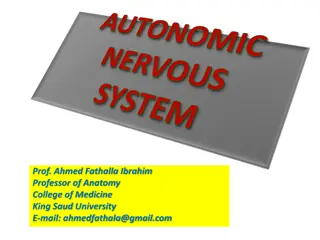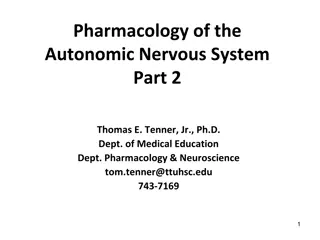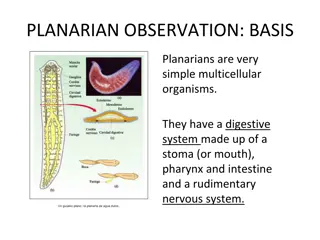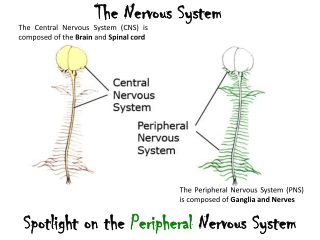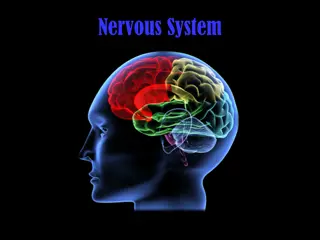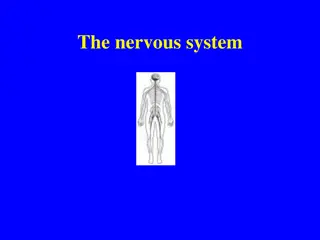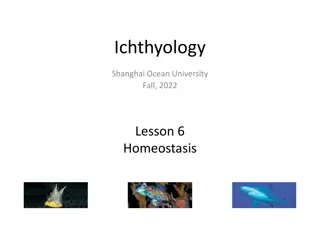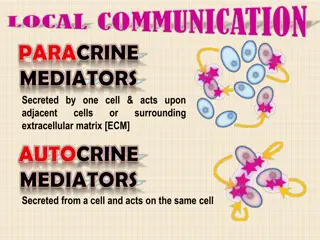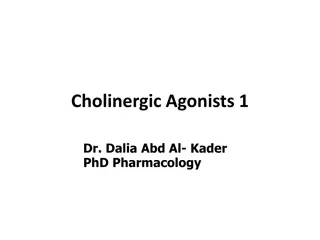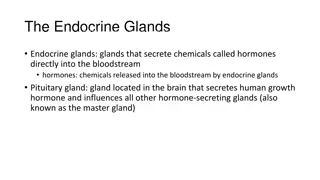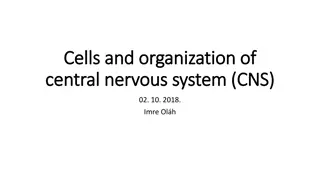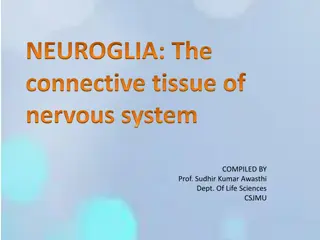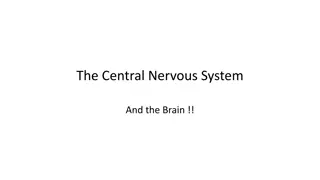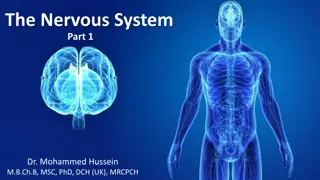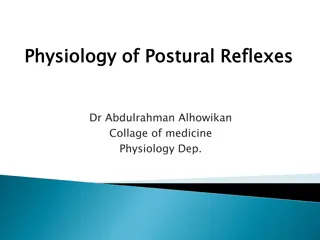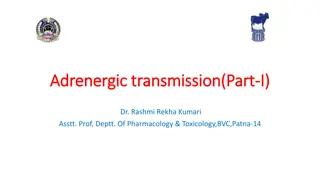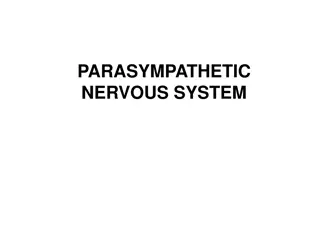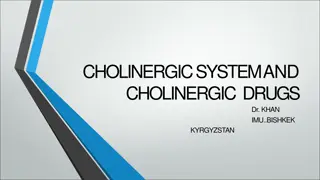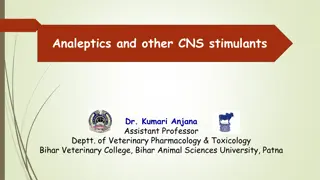Understanding the Autonomic Nervous System Functions and Effects
Explore the functions of the sympathetic and parasympathetic nervous systems, the distinct effects they have on various organs, and the differences between anabolic and catabolic responses. Learn about the specific organs supplied by each division and how their activation impacts bodily functions. Gain insights into the antagonistic yet complementary roles of these systems in regulating bodily responses.
- Autonomic Nervous System
- Sympathetic Nervous System
- Parasympathetic Nervous System
- Physiology
- University of Basrah
Uploaded on Oct 01, 2024 | 0 Views
Download Presentation

Please find below an Image/Link to download the presentation.
The content on the website is provided AS IS for your information and personal use only. It may not be sold, licensed, or shared on other websites without obtaining consent from the author. Download presentation by click this link. If you encounter any issues during the download, it is possible that the publisher has removed the file from their server.
E N D
Presentation Transcript
Autonomic Nervous System L2 Dr. Massara Ghassan Physiology Department College of Medicine\ University of Basrah
Objectives: After studying this lecture, you should be able to: Describe functions of the sympathetic and parasympathetic nervous systems List the causes of the localized discrete effect of the anabolic nervous system List the causes of the widespread diffuse & prolonged effects the catabolic nervous system Differences between Sympathetic and Parasympathetic NS 1
Function of ANS All the viscera (glands, smooth mus. &sphincters) are supplied by Sympathetic ¶sympathetic N. in which they are in antagonism for the same organ, except: 1. to the sphincters both of them are excitatory (e.g. :sphincter of the eye)? Because one supply the constrictor & the other supply the dilator muscles. University of Basrah-College of Medicine-Physiology Department 2
2. The effects of sympathetic and parasympathetic activation can be considered complementary. An example is the innervation of salivary glands. Parasympathetic causes release of watery saliva, Sympathetic activation causes the production of thick, viscous saliva. University of Basrah-College of Medicine-Physiology Department 3
Organs supplied only by Sympathetic. 1. adrenal gland 2. most blood vessels 3. the pilomotor muscles in the skin (hair follicles) 4. sweat glands. University of Basrah-College of Medicine-Physiology Department 4
Organs supplied only by parasympathetic 1. The lacrimal muscle 2. Ciliary muscle (for accommodation for near vision) 3. Sublingual salivary gland. ** University of Basrah-College of Medicine-Physiology Department 5
6 University of Basrah-College of Medicine-Physiology Department
Effects of Sympathetic and Parasympathetic Stimulation on Specific Organs 1. Eyes a. the pupillary opening University of Basrah-College of Medicine-Physiology Department 7
miosis mydriasis University of Basrah-College of Medicine-Physiology Department 8
b. Focusing of the lens is controlled almost entirely by the parasympathetic nervous system Parasympathetic excitation contracts the ciliary muscle, which will allow the lens to become more convex, causing the eye to focus on near objects. University of Basrah-College of Medicine-Physiology Department 9
Glands of the Body. The nasal, lacrimal, salivary, and many gastrointestinal glands are strongly stimulated by the parasympathetic nervous system, usually resulting in copious quantities of watery secretion. The glands of the alimentary tract most strongly stimulated by the parasympathetics are those of the upper tract, especially those of the mouth and stomach. University of Basrah-College of Medicine-Physiology Department 10
On the other hand, the glands of the small and large intestines are controlled principally by local factors in the intestinal tract itself and by the intestinal enteric nervous system. University of Basrah-College of Medicine-Physiology Department 11
The sweat glands secrete large quantities of sweat when the sympathetic nerves are stimulated, but no effect is caused by stimulating the parasympathetic nerves. However, the sympathetic fibers to most sweat glands are cholinergic (except for a few adrenergic fibers to the palms and soles) University of Basrah-College of Medicine-Physiology Department 12
Systemic Blood Vessels Most systemic blood vessels, especially those of the abdominal viscera, skin & of the limbs, are constricted by sympathetic stimulation (because alpha vasoconstrictor effects, which, in most blood vessels, are usually far dominant over the beta) University of Basrah-College of Medicine-Physiology Department 13
Parasympathetic stimulation has almost no effects on most blood vessels. Under some conditions, the beta function of the sympathetic or the sympathetic cholinergic causes vascular dilation instead of the usual sympathetic vascular constriction, as in skeletal muscles. 14
Other effects of sympathetic nervous system Increases metabolism up to 100% Increases adrenal medullary secretion Increases mental activity Increases skeletal muscle glycogenolysis and Increases it s strength University of Basrah-College of Medicine-Physiology Department 15
Alarm or stress response mass discharge the blood pressure and heart rate Pupillary diltation constricts the blood vessels Blood Mental activity Metabolic rate glucose Muscle strength Rate & depth of resp. University of Basrah-College of Medicine-Physiology Department 16
sympathetic system Catabolic nervous system University of Basrah-College of Medicine-Physiology Department 17
Why sympathetic system usually has widespread diffuse & prolonged effects? A single preganglionic fiber usually synapse with several postganglionic N. The postgang. Fibers are long & has many branches projecting to several visceral organs. Neuronal reuptake of N.E. is incomplete Activation of the adrenal medulla 18 University of Basrah-College of Medicine-Physiology Department
parasympathetic system Concerned with the vegetative aspect of day to day living ( it favors digestion & absorption of food by increasing muscle Activity, gastric secretion, &relaxation of pyloric sphincter. Anabolic nervous system. University of Basrah-College of Medicine-Physiology Department 19
Why parasympathetic system usually has localized discreet effects ? parasympathetic preganglionic Axons have very little branches and go directly to parasympathetic Ganglia. Ach. Is rapidly destroyed by acetylcholinesterase enzyme. Mainly the P.S.N.is activated in response to reflexes according to the need of a particular organ 20 University of Basrah-College of Medicine-Physiology Department
University of Basrah-College of Medicine-Physiology Department 21
Recap 1. Functions of autonomic NS on various organs 2. Sympathetic act as catabolic NS 3. Parasympathetic act as anabolic NS 25


